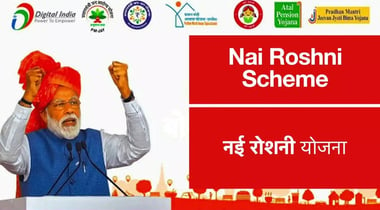India’s Strategy to Eliminate Naxalism: A Battle Beyond the Gun
Explore India's multi-pronged strategy to eliminate Naxalism by 2026, addressing its root causes through security, development, and tribal empowerment.
MISCELLANEOUS
Deepita
4/8/20253 min read


"You cannot fight fire with fire alone—sometimes, you need to rebuild what was burnt.”
India's war against Naxalism—a homegrown insurgency rooted in inequality, alienation, and neglect—has entered a decisive phase. With the Union Home Minister recently announcing a bold goal of a Naxal-free India by 31st March 2026, the government is signaling its commitment to a comprehensive aand final push to end Left-Wing Extremism (LWE). But what does this strategy look like? And more importantly, what made this decades-long conflict possible in the first place?
Let’s explore the roots of Naxalism and how India is evolving its response.
What is Naxalism?
Naxalism, inspired by Maoist ideology, seeks to overthrow the Indian state through armed rebellion and guerrilla warfare. It began in 1967 in Naxalbari, a small village in West Bengal, when a violent peasant uprising against landlords ignited a movement that would spread across India's heartland.
Over the decades, it morphed into a sophisticated insurgency, drawing strength from disillusionment among tribal and rural communities who felt left out of India’s development story.
Why Did Naxalism Rise?
Landlessness & Exploitation : Deep inequalities in land ownership and predatory practices by landlords and moneylenders pushed marginalized groups to revolt.
Poverty & Underdevelopment : Lack of access to schools, hospitals, and basic infrastructure in remote areas allowed Naxals to fill the vacuum with parallel governance.
Tribal Alienation : Tribes displaced by mining and industrial projects were often left without adequate compensation or rehabilitation, leading to resentment.
State Violence & Absence : Excesses by law enforcement and lack of meaningful governance only deepened the divide between the state and the people.
India’s Multi-Pronged Strategy to Eliminate Naxalism
The government’s approach today is multi-dimensional, combining boots on the ground with bridges to development.
1. Security Operations
Operation Green Hunt and similar initiatives have seen increased deployment of Central Armed Police Forces (CAPFs).
Strengthened intelligence networks and 612 fortified police stations (up from 66 in 2014) in vulnerable areas.
Use of modern surveillance, drones, and coordinated state-centre action.
2. Development First
Pradhan Mantri Gram Sadak Yojana II enhances road connectivity in remote regions.
ROSHNI Scheme offers skill training and jobs to rural youth, reducing the appeal of insurgent groups.
Eklavya Model Residential Schools (EMRS) improve education for tribal children.
Digital Bharat Nidhi (formerly USOF) expands telecom connectivity in cut-off zones.
3. Legal and Policy Tools
The Unlawful Activities (Prevention) Act, 1967 bans Naxal outfits and curbs their funding.
Forest Rights Act, 2006 and PESA, 1996 empower tribal communities and strengthen grassroots governance.
Surrender-cum-Rehabilitation Policy offers financial aid, training, and reintegration support for surrendered insurgents.
The Road Ahead
The government’s 2026 deadline is ambitious, but not unrealistic. Success hinges not only on eliminating armed insurgents but also on winning trust, delivering justice, and ensuring inclusive development.
India must continue to:
Build infrastructure without displacing dignity
Offer rehabilitation, not just retribution
Make tribal and rural communities partners, not targets.
Naxalism isn’t just a fight against armed rebels—it’s a reflection of deep-rooted discontent. India’s true victory will not be counted in arrests or encounter kills, but in villages that finally feel heard, children that finally go to school, and communities that no longer see the gun as their only voice.
As we move toward 2026, the mission isn’t just to end Naxalism—it’s to ensure it never rises again.




